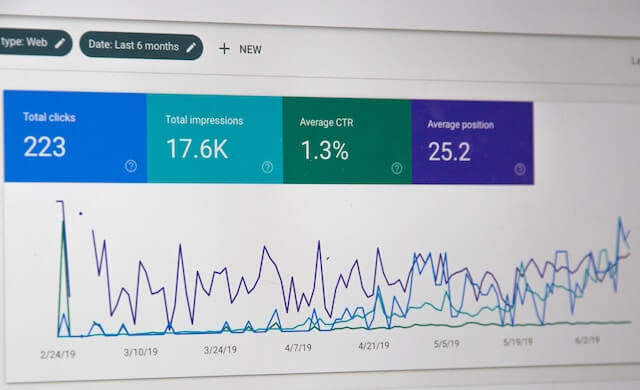SOCIAL
The Ultimate Guide to Blogging in English for Non-Native Speakers

I recently came across a Filipina who shared that she’s an aspiring writer who wants to start blogging in English, but she found it difficult to convey her message in her post because English isn’t her first language despite the fact that she’s been living in England for a few years now.
As a non-native English speaker who runs my blog in English, this conversation sparked an idea to share my experience of blogging in English when English isn’t my first language.
In this post, I’m going to share everything you need to know about blogging in English for non-native speakers. The struggles, tips, and strategies to make it your competitive advantage instead of hitting yourself with imposter syndrome due to the fact that English is not your first language.
So, here’s a guide on what to expect when you decide to run a blog with English content despite being a non-native speaker!
✭ Are you ready to start your English blog? ✭
Make sure to stay informed about the best platforms to run your blog. Get the best deals with these recommended blogging tools!
⌨ Secure your blog domain now via Namecheap or Domain.com!
⌨ Get your WordPress hosting using platforms like BlueHost or Domain.com.
⌨ Subscribe to thousands of blogging and creative resources on Envato Elements!
⌨ Use Grammarly to proofread and edit your blog posts before hitting that publish button.
⇛ If you’re still hesitant to start blogging in English as you’re not confident with your English writing skills, it may be worth checking out online English courses from EF or the British Council.
⇛ Looking to master your Creative Writing skills? Sign up for this course to enhance your English writing skills, the creative way!
⇛ Level up your blogging skills by enhancing your knowledge in search engine optimization. Check the SEODude course to gain your expertise!
Pros and Cons of Blogging in English as a Non-Native Speaker
Anyone who has ever had to deal with learning a foreign language knows how difficult it got to get to the level where you can converse in a language that’s not your mother tongue. Believe it or not, writing in English for non-native English speakers isn’t that easy either.
Well, while technically you could always use Google Translate to translate everything you want to say in English, everyone who has ever used Google Translate knows that the result isn’t always engaging; which is tremendously needed if you want to create a successful English blog from scratch as a non-native English speakers.
Based on my experience of running this blog for years as a non-native English speaker, I find blogging in English rewarding in terms of experience and even for me financially, but it also comes with its own set of challenges.
When you decide to start a blog with English content, you will need to build a habit to update it. Why waste your time building a website only to neglect it because you have no time to write new content for your blog? You need to dedicate your time to creating new content regularly, be it one article per day (though I think it’d be ambitious to get it started, but it’s possible if you have time for it!) or even just one post monthly.
Once you make the habit out of it, you’ll realize that your English writing skills will improve will time. After all, practice makes perfect and it definitely applies to blogging.
Pros of Blogging in English for Non-Native Speakers

Whenever I looked back to the old articles that I wrote when I first started, I was amazed by how much of a better writer I am now compared to then. I started blogging in English when I was in early 20s, and back then I couldn’t afford tools like Grammarly to double check everything I wrote. As a result, some of my old posts are freaking cringe but the bright side is that I can see how I’ve evolved as an English writer even though I’m not a native speaker.
One of the benefits that you can get from blogging in English as a non-native speaker is that it can improve your English writing skills. This is especially true if you dedicate your time to producing content regularly and learn from your mistakes every day.
In addition, if you’re a non-native English speaker from a developing country like me, it can also financially benefit you when you start monetizing your blog. It’s not easy money that you can get instantly (because you’re missing the point if that’s the reason why you start blogging in the first place), but I know firsthand that I get compensated better when I get writing gigs in English than in my native language!
When you build your blog in English, you can use it as your own portfolio, whether you want to have a career as a content writer for clients or just build your personal brand as a blogger. Either way, making money with your blog isn’t impossible, and that’s only one of the numerous benefits you can get from running an English blog for non-native speakers!
Cons of Blogging in English as Non-Native Speakers
As a non-native speaker, I don’t know how many times I lost some potential projects after the client found out that English isn’t my first language. While I know that it’s their problem and not mine, I also acknowledge that it’s something that I will have to deal with every day as a blogger whose native language isn’t English.
While I know that ideal clients are out there and we just need to find them where they are (easier said than done, I tell ya!), most clients who want to work with me expect to pay peanuts for exactly the same reason: I’m not a native English speaker.
One of the main issues that I’ve been facing ever since I started blogging in English is probably imposter syndrome. Do clients expect to pay less than the market standard because I’m not a native English speaker? Would it be easier if I were white? Or is the issue plain and simple, and it’s because I’m just not good enough?
With that train of thought in your head, it’s so easy to sell yourself short whenever you find a brand or client willing to work with you. Honestly, even after years of having this blog as my brand, I’m still afraid to offer a higher rate for sponsored posts just because I often feel like I don’t deserve it as a non-native English blogger. And I worked with brands who were willing to pay me a couple of bucks for one post!
However, I’ve learned enough to know that I don’t deserve to get paid peanuts for my work. I no longer entertain any template email that expects me to say yes for a $5 job, and I focus on maintaining relationships with brands and PR agencies who are willing to pay me the rate that I think is fair.

9 Foolproof Tips for Blogging in English as a Non-Native Speaker
While I can’t claim to be that 5 or 6-figure blogger who can promise you sparks and glitters from running an English blog, I’ve been blogging in English for years now and I’ve earned enough money to say that my strategy works quite well to attract even native English speaker audience.
Over 30% of my monthly visitors are in the US, so it’s fair to say that my English blogging strategy works even though English isn’t my first language. Here are some foolproof tips that you can implement if you want to start an English blog as a non-native speaker!
1. Choose a blog niche that you’re passionate about
If you want to make money from your English blog through ads or sponsored posts, you need to choose a blog niche for several reasons. First, blogging requires consistency, and picking a blog niche that you actually like will help you get motivated to produce content regularly.
Publish blog posts consistently will improve your authority in the niche you choose; which can open more opportunities for sponsorships and other paid works. When you enjoy what you write about, blogging won’t feel like a job. That’s what happened when I chose travel as my main theme when I started this blog!
It’s probably slightly different if your main goal to start a blog is to use it as your writing portfolio. In this case, you can use a free blogging platform like WordPress.com and write whatever you want to write. When you do it this way, the possibility of monetizing your blog will be super limiting but you can use the link as your portfolio when applying for writing jobs for companies or clients.
Consistency isn’t only required to grow your blog, but it also helps to improve your writing skills, especially if you’re a novice to English writing. When you write consistently, you can learn it by doing and you can be a better writer over time. It’s a win-win!

2. Sign up for an English class if necessary
When I spoke to this Filipina girl who mentioned her issues in English writing, my first question to her was this: in what aspect did she find it hard when it comes to writing? Was she struggling to find a brand voice for her writing? Or was it more to do with her confidence to write in a language that’s not her mother tongue?
As a non-native English speaker, you should be the person who knows best about which level you are in English. Maybe you’re okay with conversational English, but you still need to master your writing skills. Whichever level your English skill is, you need to find a way to improve it.
For me, I’m pretty much the other way around. I think I’m a better writer in English than a speaker. Heck, I’m not even a good talker in my native language, and I speak two languages before English.
In general, my English wasn’t terrible as I took some political classes in English back in the university, so I got used to writing English essays long before I made this blog my personal gig. But as a non-native English speaker, I know there’s still room for improvement to brush my English writing skills so that’s why I’ve practiced it through my writing in this blog.
If what stops you from writing in English is because you’re not confident to use it as a non-native English speaker, taking an English course may help to improve your basic English level. You can consider taking an online English class like EF Online or British Council English Online to get you started, so you can at least get a grasp of the basic grammar while simultaneously practicing writing in English for your blog.

3. Avoid using big words and keep it simple
Unless you’re a doctor looking to grow a medical blog or something, avoid using big words that only a few people understand. Yes, even English speakers only use words like “myriad” once in a blue moon. LOL.
Simplicity makes your content more accessible to a wider audience, so try to keep it simple and avoid unnecessarily complex languages if you can help it.
For non-native English speakers, the chance of us using big words incorrectly is obviously bigger than those who speak English as a mother tongue. Your goal when writing in English is to ensure that even English speakers can understand the message you’re trying to convey in your writing, not to impress them with words they may not even have heard of on a daily basis!
4. Use language tools to expand your vocabulary
While avoiding using jargon and big words is advisable, it’s also essential to develop your English writing skills over time so you can also use online language tools to expand your vocabulary when writing an article.
I occasionally use WordHippo to find synonyms when I feel like overusing the same word in one sentence. And since I don’t always use formal English when writing content on my blog, I also occasionally check Urban Dictionary to ensure that my choice of words is correct without embarrassing myself after hitting that publish button.

5. Make some time to proofread and edit your writing piece
English is a hard language, and sometimes the formula that applies in this language has too many exceptions to keep up for non-native speakers. That’s also why you need to pay extra attention to proofreading and editing your posts to ensure you can avoid minor mistakes before publishing the content on your blog.
If I have to be honest, I rarely proofread and edit my blog posts and most of the published posts on my blog are basically the first draft I made for that post. However, it’s also because I use Grammarly as a grammar-checking tool to catch errors and improve the overall quality of my writing. It helps, but just like any general AI tools, you can’t rely on its suggestions for all your work and sometimes you also need to use your instinct to make it more sense.
I also used Quillbot for my business, as the premium plan for the latter is far cheaper than Grammarly. However, the functionality in Grammarly is preferable for me since I can collect numerous drafts in the cloud under my account without saving it as a document file.
6. Find inspirations from content created by other bloggers in your niche
Blogwalking to some other English bloggers can also be one way to improve your blogging skills in English. Find a muse in your blogging niche, and you can analyze their writing style before implementing it in yours.
Of course, I don’t condone copying their writing word-by-word because blogging is no different from academic writing when it comes to plagiarism: it is an unforgivable sin!
When blogwalking to other English-written blogs, you may even find one who’s just like you, they’re not a non-native English speaker too! One of my favorites is Kach from Two Monkeys Travel Group, a Pinay blogger who made it big in the industry.
Making some time to check out native English bloggers will also give you an idea of how they write, and maybe it will also inspire you to find a tone in your writing. Before I started The BeauTraveler, The Blonde Abroad blog inspired me on how I wanted to write my content. I wanted to use simple words while spicing it up with my personality inside my writing!
Now that I occasionally write content about blogging and remote working, my muse is Sharon from Digital Nomad Wannabe as I found her resources valuable and so easy to understand!

7. Collaborate with native English bloggers
Collab and guest posts are two of my favorite blogging activities to nurture my network with other bloggers, including native English bloggers. I regularly make time to contribute to collab posts or write guest posts for them not only for link building purpose, but also as a part of my learning experiences.
When hosting a collab post or allowing guest posts on their blog, bloggers usually make some time to edit the draft in a way that it will be presentable for their audience. I usually keep my submission draft and check the final version in their blog to see which part they edited, and whether it had something to do with my grammar or more like because my writing tone that didn’t suit their audience.
If it’s the grammar, I’d use it as a learning experience since it’s easier to learn from your own mistakes. But if it’s the latter, I don’t take it personally just because sometimes the blog that I collaborate with has a totally different demography from mine.
8. Set realistic goals for your blog
Even if you’re a new blogger, it’s important to define your blogging goals and expectations to help you stay motivated and focused on your long-term objectives.
When I got started, my goal was simple: to have a platform to pour my creativity while hopefully getting a chance to earn extra income in the process. I wanted my blog to become my writing portfolio as well as a side income, and that’s how it had become!
In my first year, my goal was to get accepted by Google Adsense as it was the only ad network that I knew then. I got accepted only a few months after I started blogging, and basically made my first buck from Adsense two years later. LOL.
However, I had already made money from sponsored and paid guest posts long before then. I got invited for a free stay at Best Western Premier The Hive in Jakarta, and also got a chance to write for Sileu Menstrual Cup from Spain which I’ve been using for that time of the month ever since.
This year, I plan to focus more on affiliate links for my blog since this is something I haven’t touched ever since I started blogging in 2017.
9. Learn the technical side of blogging
The catch about blogging is that it’s not just about writing, especially when you just get started. To build a successful blog, you also need to know about SEO and how to optimize your blog in terms of user interface and user experience.
While you can always check out free resources from YouTube or sign up for short courses from platforms like Udemy or Coursera, let’s face the fact that some of us are just not built for all things techy. I know I’m not… To some extent!

Here’s how you can take advantage of the fact that English isn’t your first language… Because if you come from a third-world country like me, you don’t have to pay that overpriced tech bro from Silicon Valley to clear your web cache since chances are you can find a local expert in the tech problems for a reasonable price!
Another benefit of running an English blog as a non-native speaker from a developing country is that I’ve got a wide range of options when it comes to web hosting. Instead of paying for the annual rate (which can be pretty high for starters!) at web hosting providers like Bluehost or Namecheap, I can pay it monthly with an Indonesian-based web hosting provider at Dewaweb. On top of that, the plan that I subscribe to offers much more functionalities at a cheaper rate than those big international companies!
My advice if you’re a non-native speaker looking into an opportunity to earn money from blogging in English is this: do your business in English, but always buy locals for all your blogging resources. You’ll earn more profit, and if you look carefully, the quality of service is probably far better than those popular tech coaches in English blogging communities!
Conclusion
Blogging in English as a non-native speaker comes with both advantages and disadvantages. On one hand, as a language that’s widely spoken all over the world, you can reach more audience with the right blogging strategy.
It doesn’t matter if you’re totally brand new to blogging and you just want to practice your English writing skills in your own platform, you can never be too early to start blogging in English. If you already get used to writing in English, having an English-written blog can also expand your audience to ensure your writing pieces are seen on the World Wide Web.
Another advantage is that you can also have a competitive advantage as a non-English writer in terms of your resources. Whether you want to make a bilingual blog with content in both English and your native language, or you’d rather earn your blogging income in high currencies like dollar or poundsterling while using local blogging resources in your local currency, the sky is the limit!
The downside? English blogging is quite competitive as some brands or clients will most likely prioritize English native speakers for some types of collaborations, and sometimes you can’t really do anything about it. But hey, don’t stop you from writing in English since there will also be some other clients that will appreciate your skills because most people know that writing in a language that’s not your mother tongue isn’t for the faint of heart!
So, are you ready to start your international blogging journey by starting to write in English? Or have you been doing this for some time now? Share your experience below, and cheerio!


Marya The BeauTraveler

I am the founder and main editor at The BeauTraveler. I spent 4 years working in the aviation industry but ironically got to travel more right after quitting the industry in 2015. Born and raised in Indonesia, I started working remotely in 2017, and while I stay at home most of the time, I also regularly spend 2-3 months living a semi-digital nomad life elsewhere every year.
Disclaimer:
This post may contain affiliate links. I receive a small commission at no cost to you when you make a purchase using my link.
Like my post?
Related
SOCIAL
Snapchat Explores New Messaging Retention Feature: A Game-Changer or Risky Move?

In a recent announcement, Snapchat revealed a groundbreaking update that challenges its traditional design ethos. The platform is experimenting with an option that allows users to defy the 24-hour auto-delete rule, a feature synonymous with Snapchat’s ephemeral messaging model.
The proposed change aims to introduce a “Never delete” option in messaging retention settings, aligning Snapchat more closely with conventional messaging apps. While this move may blur Snapchat’s distinctive selling point, Snap appears convinced of its necessity.
According to Snap, the decision stems from user feedback and a commitment to innovation based on user needs. The company aims to provide greater flexibility and control over conversations, catering to the preferences of its community.
Currently undergoing trials in select markets, the new feature empowers users to adjust retention settings on a conversation-by-conversation basis. Flexibility remains paramount, with participants able to modify settings within chats and receive in-chat notifications to ensure transparency.
Snapchat underscores that the default auto-delete feature will persist, reinforcing its design philosophy centered on ephemerality. However, with the app gaining traction as a primary messaging platform, the option offers users a means to preserve longer chat histories.
The update marks a pivotal moment for Snapchat, renowned for its disappearing message premise, especially popular among younger demographics. Retaining this focus has been pivotal to Snapchat’s identity, but the shift suggests a broader strategy aimed at diversifying its user base.
This strategy may appeal particularly to older demographics, potentially extending Snapchat’s relevance as users age. By emulating features of conventional messaging platforms, Snapchat seeks to enhance its appeal and broaden its reach.
Yet, the introduction of message retention poses questions about Snapchat’s uniqueness. While addressing user demands, the risk of diluting Snapchat’s distinctiveness looms large.
As Snapchat ventures into uncharted territory, the outcome of this experiment remains uncertain. Will message retention propel Snapchat to new heights, or will it compromise the platform’s uniqueness?
Only time will tell.
SOCIAL
Catering to specific audience boosts your business, says accountant turned coach

While it is tempting to try to appeal to a broad audience, the founder of alcohol-free coaching service Just the Tonic, Sandra Parker, believes the best thing you can do for your business is focus on your niche. Here’s how she did just that.
When running a business, reaching out to as many clients as possible can be tempting. But it also risks making your marketing “too generic,” warns Sandra Parker, the founder of Just The Tonic Coaching.
“From the very start of my business, I knew exactly who I could help and who I couldn’t,” Parker told My Biggest Lessons.
Parker struggled with alcohol dependence as a young professional. Today, her business targets high-achieving individuals who face challenges similar to those she had early in her career.
“I understand their frustrations, I understand their fears, and I understand their coping mechanisms and the stories they’re telling themselves,” Parker said. “Because of that, I’m able to market very effectively, to speak in a language that they understand, and am able to reach them.”Â
“I believe that it’s really important that you know exactly who your customer or your client is, and you target them, and you resist the temptation to make your marketing too generic to try and reach everyone,” she explained.
“If you speak specifically to your target clients, you will reach them, and I believe that’s the way that you’re going to be more successful.
Watch the video for more of Sandra Parker’s biggest lessons.
SOCIAL
Instagram Tests Live-Stream Games to Enhance Engagement

Instagram’s testing out some new options to help spice up your live-streams in the app, with some live broadcasters now able to select a game that they can play with viewers in-stream.
As you can see in these example screens, posted by Ahmed Ghanem, some creators now have the option to play either “This or That”, a question and answer prompt that you can share with your viewers, or “Trivia”, to generate more engagement within your IG live-streams.
That could be a simple way to spark more conversation and interaction, which could then lead into further engagement opportunities from your live audience.
Meta’s been exploring more ways to make live-streaming a bigger consideration for IG creators, with a view to live-streams potentially catching on with more users.
That includes the gradual expansion of its “Stars” live-stream donation program, giving more creators in more regions a means to accept donations from live-stream viewers, while back in December, Instagram also added some new options to make it easier to go live using third-party tools via desktop PCs.
Live streaming has been a major shift in China, where shopping live-streams, in particular, have led to massive opportunities for streaming platforms. They haven’t caught on in the same way in Western regions, but as TikTok and YouTube look to push live-stream adoption, there is still a chance that they will become a much bigger element in future.
Which is why IG is also trying to stay in touch, and add more ways for its creators to engage via streams. Live-stream games is another element within this, which could make this a better community-building, and potentially sales-driving option.
We’ve asked Instagram for more information on this test, and we’ll update this post if/when we hear back.
-

 WORDPRESS6 days ago
WORDPRESS6 days ago13 Best HubSpot Alternatives for 2024 (Free + Paid)
-

 MARKETING6 days ago
MARKETING6 days agoAdvertising in local markets: A playbook for success
-

 SEARCHENGINES6 days ago
SEARCHENGINES6 days agoGoogle Core Update Flux, AdSense Ad Intent, California Link Tax & More
-

 AFFILIATE MARKETING7 days ago
AFFILIATE MARKETING7 days agoGrab Microsoft Project Professional 2021 for $20 During This Flash Sale
-

 SEARCHENGINES5 days ago
SEARCHENGINES5 days agoGoogle Needs Very Few Links To Rank Pages; Links Are Less Important
-

 PPC4 days ago
PPC4 days ago10 Most Effective Franchise Marketing Strategies
-

 MARKETING5 days ago
MARKETING5 days agoHow to Use AI For a More Effective Social Media Strategy, According to Ross Simmonds
-

 SEARCHENGINES3 days ago
SEARCHENGINES3 days agoGoogle Won’t Change The 301 Signals For Ranking & SEO













